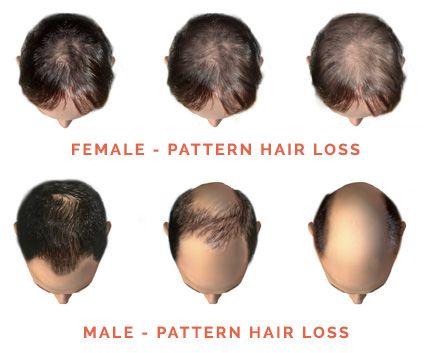Hair Loss: Understanding the Options
Hair loss is a common problem that affects millions of people worldwide. Whether caused by genetics, hormonal changes, medical conditions, or other factors, losing hair can have a significant impact on one’s self-esteem and overall well-being.
Identifying the Causes
Before diving into the available options for treating hair loss, it is essential to identify the underlying causes. Some common causes include:
Genetics – Male and female pattern baldness are the most common genetic causes of hair loss.
Hormonal changes – Hormonal imbalances, such as those experienced during pregnancy or menopause, can lead to hair loss.
Medical conditions – Certain medical conditions, such as thyroid disorders and autoimmune diseases, may cause hair loss.
Medications – Some medications, like chemotherapy drugs and antidepressants, can lead to temporary or permanent hair loss.
Non-Surgical Options
For individuals experiencing hair loss, various non-surgical options can help manage and even reverse the condition. These options include:
1. Topical Treatments
Topical treatments like minoxidil (Rogaine) are commonly used to stimulate hair growth. These solutions are applied directly to the scalp, and over time, they can promote hair regrowth, slow down hair loss, and increase hair thickness.
2. Oral Medications
Prescription medications like finasteride (Propecia) are effective in treating hair loss caused by genetics. These medications work by inhibiting the enzyme responsible for converting testosterone to dihydrotestosterone (DHT), the hormone that shrinks hair follicles.
3. Laser Therapy
Laser therapy involves using low-level laser devices or combs to stimulate hair follicles, promote hair growth, and improve the overall health of the scalp. This non-invasive treatment can be performed at home or in specialized clinics.
Surgical Options
In cases where non-surgical treatments fail to produce the desired results, surgical options may be considered. These options include:
1. Hair Transplantation
Hair transplantation is a surgical procedure that involves removing hair follicles from a donor site (typically the back of the head) and implanting them into areas with thinning or no hair. The transplanted hair grows naturally and can provide long-term, permanent results.
2. Scalp Reduction
Scalp reduction is a procedure where the surgeon removes areas of bald skin and stretches the remaining hair-bearing scalp to cover these areas. This technique is often combined with hair transplantation to achieve optimal results.
3. Scalp Micropigmentation
Scalp micropigmentation is a non-surgical, cosmetic tattooing procedure that creates the appearance of a closely shaved head or adds density to thinning hair. It involves applying tiny dots of pigment to the scalp, simulating the appearance of hair follicles.
The Importance of Consultation
Before choosing any hair loss treatment option, it is crucial to consult with a professional hair specialist or dermatologist. They can evaluate the underlying causes of hair loss, recommend the most suitable treatments, and provide guidance throughout the process.
Conclusion
Understanding the options available for managing hair loss is essential for anyone affected by this condition. Whether opting for non-surgical or surgical treatments, consulting with a professional will help determine the most appropriate choice based on individual needs and preferences. Remember, hair loss can be successfully treated, allowing individuals to regain their confidence and enjoy a full, healthy head of hair once again.


